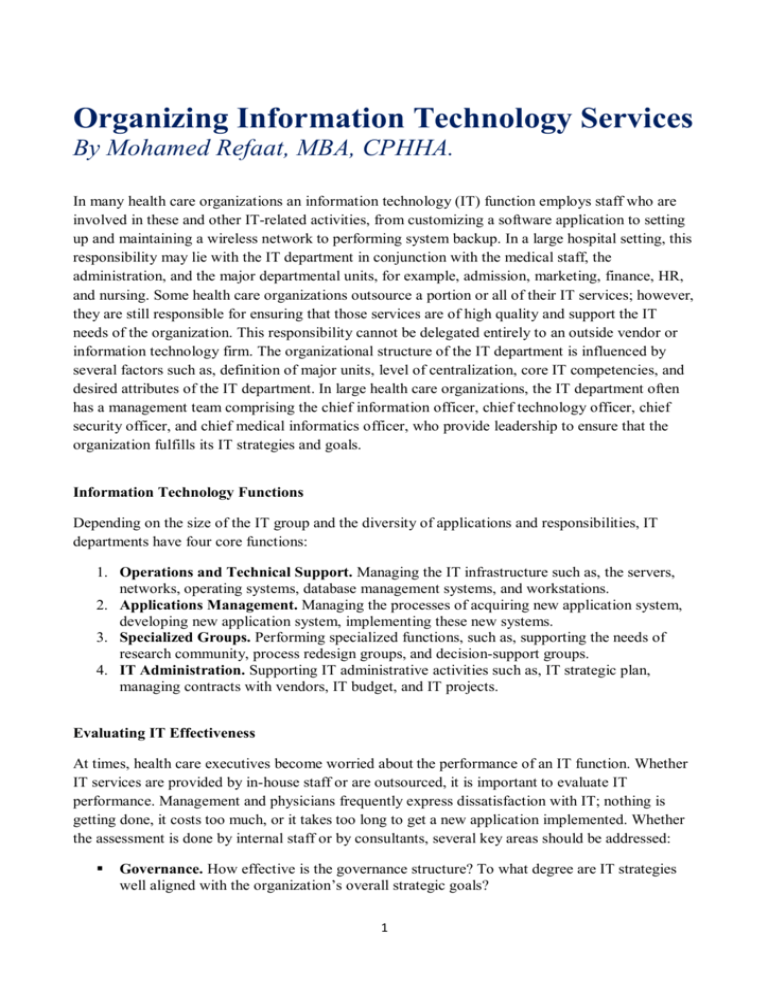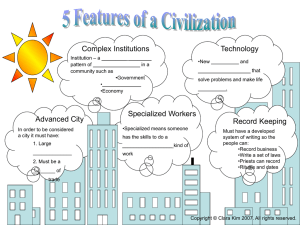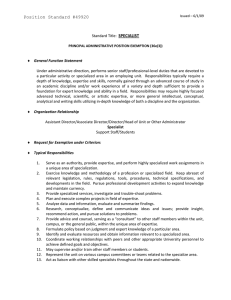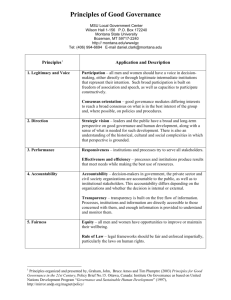IT Services in Healthcare: Organization & Evaluation
advertisement

Organizing Information Technology Services By Mohamed Refaat, MBA, CPHHA. In many health care organizations an information technology (IT) function employs staff who are involved in these and other IT-related activities, from customizing a software application to setting up and maintaining a wireless network to performing system backup. In a large hospital setting, this responsibility may lie with the IT department in conjunction with the medical staff, the administration, and the major departmental units, for example, admission, marketing, finance, HR, and nursing. Some health care organizations outsource a portion or all of their IT services; however, they are still responsible for ensuring that those services are of high quality and support the IT needs of the organization. This responsibility cannot be delegated entirely to an outside vendor or information technology firm. The organizational structure of the IT department is influenced by several factors such as, definition of major units, level of centralization, core IT competencies, and desired attributes of the IT department. In large health care organizations, the IT department often has a management team comprising the chief information officer, chief technology officer, chief security officer, and chief medical informatics officer, who provide leadership to ensure that the organization fulfills its IT strategies and goals. Information Technology Functions Depending on the size of the IT group and the diversity of applications and responsibilities, IT departments have four core functions: 1. Operations and Technical Support. Managing the IT infrastructure such as, the servers, networks, operating systems, database management systems, and workstations. 2. Applications Management. Managing the processes of acquiring new application system, developing new application system, implementing these new systems. 3. Specialized Groups. Performing specialized functions, such as, supporting the needs of research community, process redesign groups, and decision-support groups. 4. IT Administration. Supporting IT administrative activities such as, IT strategic plan, managing contracts with vendors, IT budget, and IT projects. Evaluating IT Effectiveness At times, health care executives become worried about the performance of an IT function. Whether IT services are provided by in-house staff or are outsourced, it is important to evaluate IT performance. Management and physicians frequently express dissatisfaction with IT; nothing is getting done, it costs too much, or it takes too long to get a new application implemented. Whether the assessment is done by internal staff or by consultants, several key areas should be addressed: Governance. How effective is the governance structure? To what degree are IT strategies well aligned with the organization’s overall strategic goals? 1 Budget development and resource allocation. On average, hospitals spend 2.7 percent of their operating budget and 15 percent of their capital budget on IT (Gartner, 2007) System acquisition. How effective are system acquisitions? How long did they take? What process was used to select the systems? System implementation. Are new applications delivered on time, within budget, and according to specification? IT service level. Formal measurable service levels can be established for many infrastructure attributes, day-to-day support, and consultation. 2











